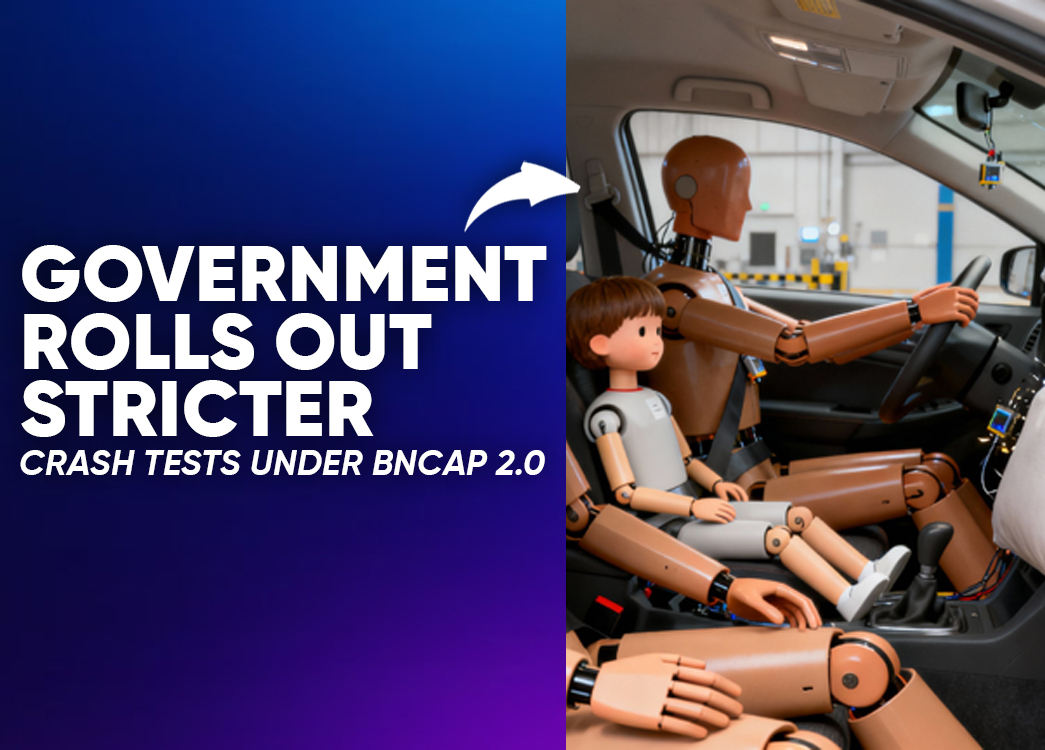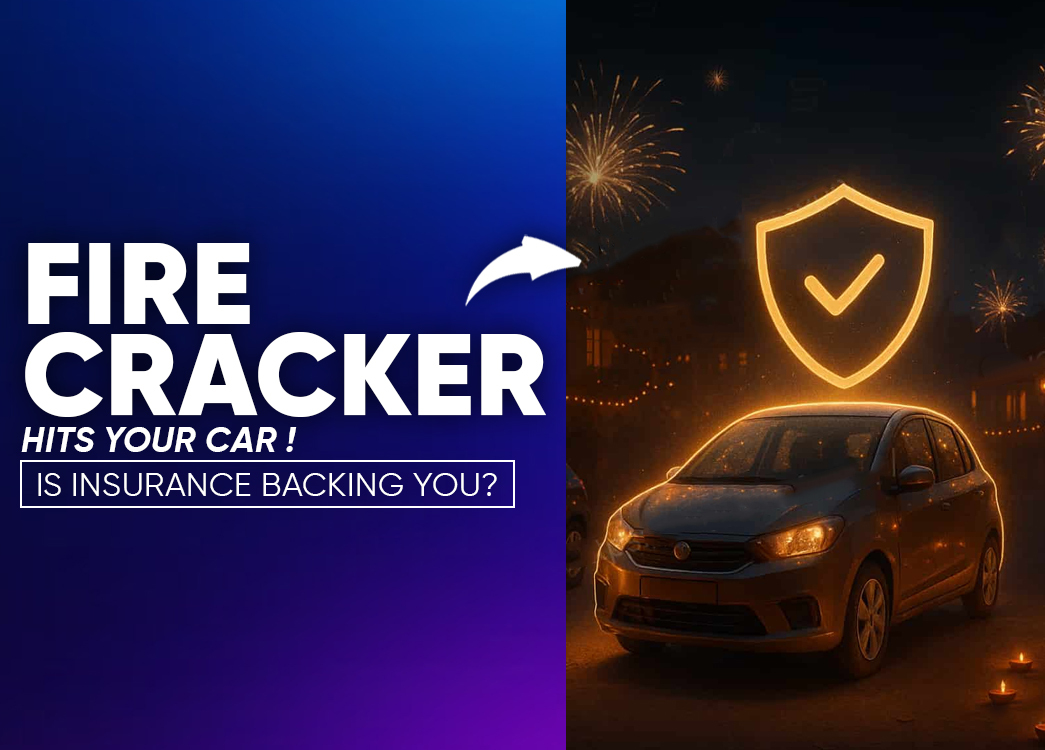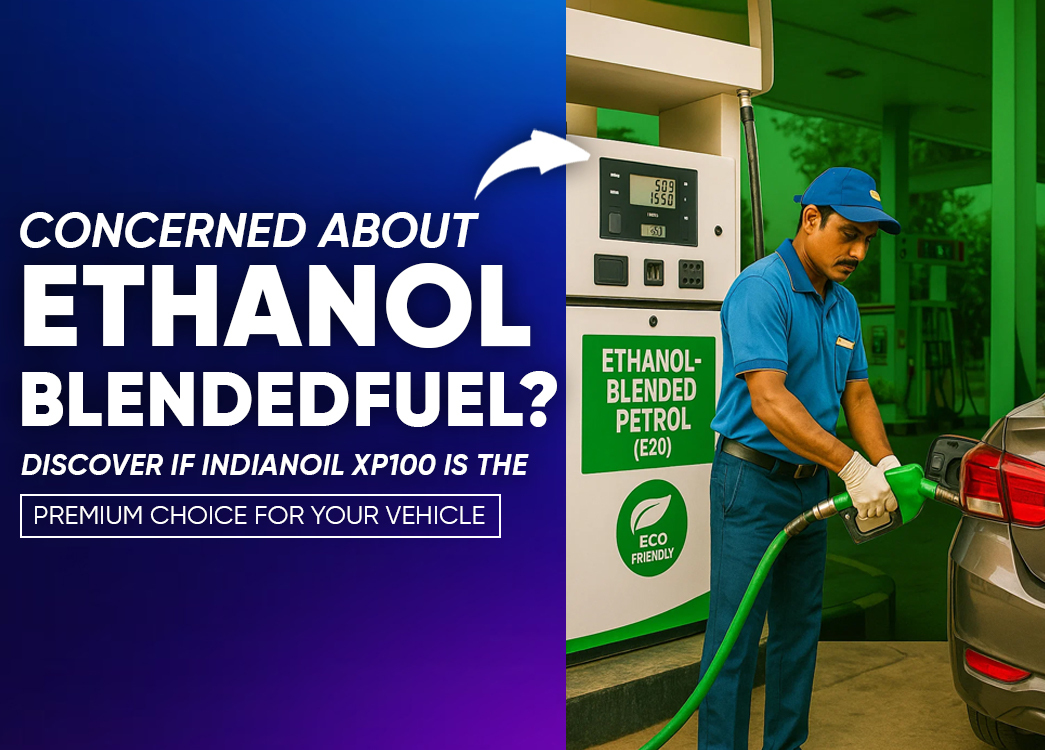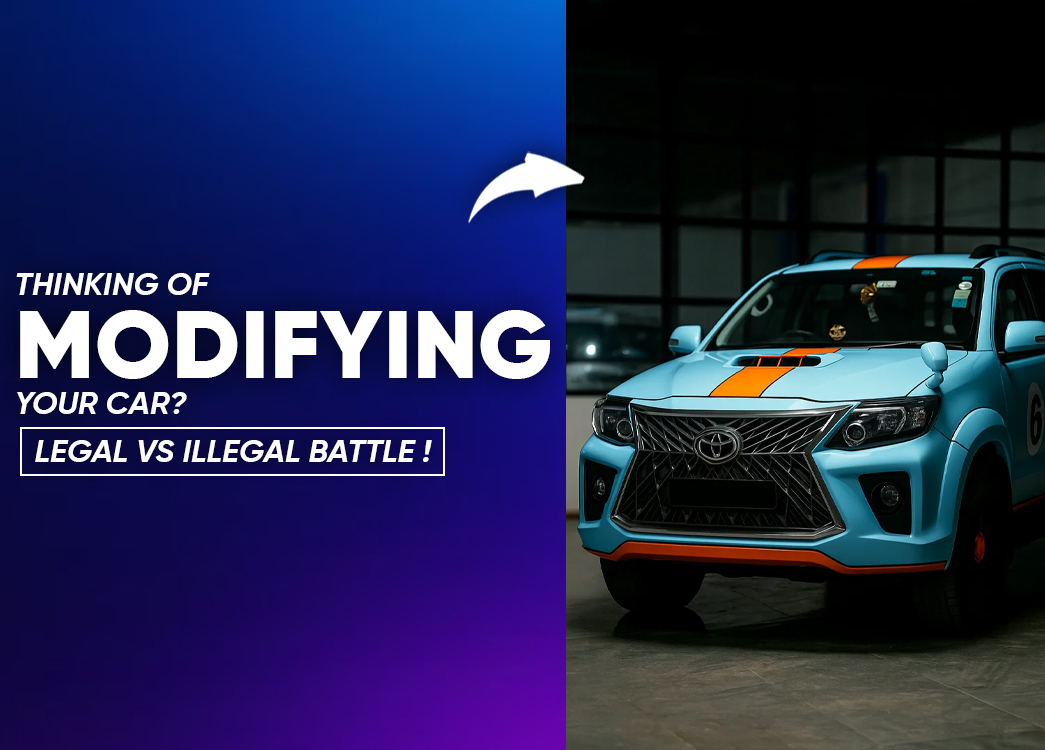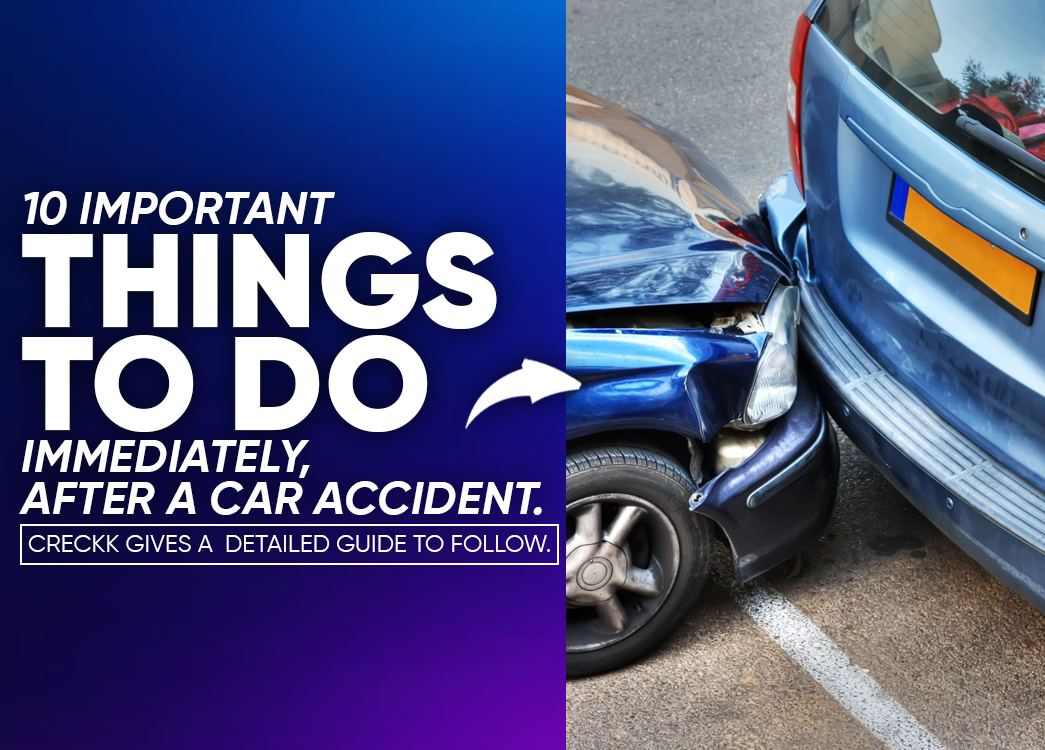
By creckk On 04-09-2025 at 5:55 am
What To Do After A Car Accident: 10 Essential Steps For Safety, Legal & Insurance
What To Do After A Car Accident: 10 Essential Steps
Accidents can occur within a blink of an eye, but knowing how to respond to them is important for your safety and the safety of others involved. There’s an old saying, "Durghatna se der bhali" (better late than never) which holds true for road safety! Thus, always wear a seat belt, follow traffic rules, and be alert while driving. But if the unexpected happens, here’s how to deal with it:
1. Stay Calm and Assess the Situation
The shock of being involved in an accident can be stressful. However, maintaining your cool is essential to help you quickly assess the situation and take further steps. The initial 3-4 seconds after an accident can set the tone for how effectively you manage the aftermath. Take a deep breath, focus on your surroundings and move slowly to check for injuries - both in yourself and others. Try to gauge the severity of the accident calmly.
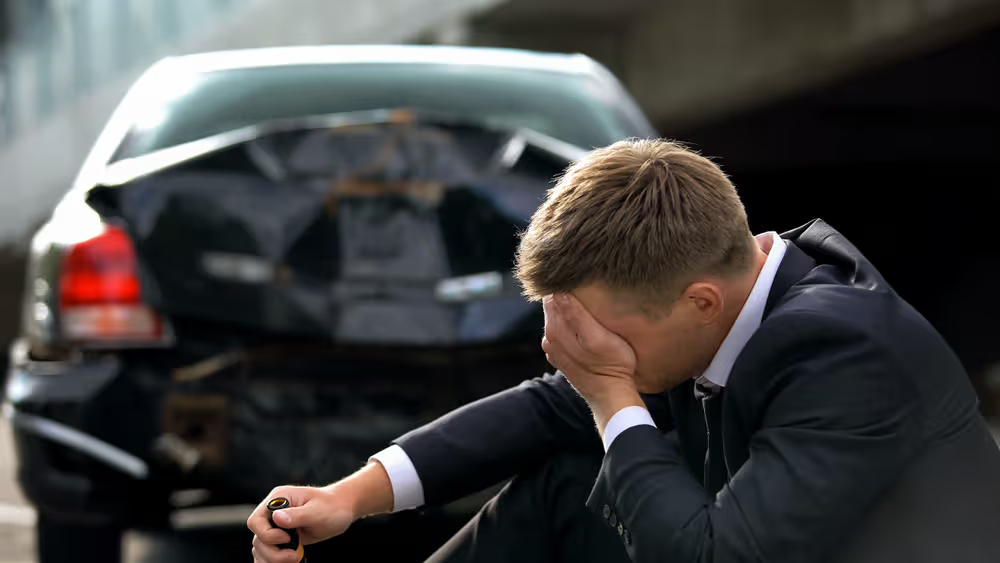
Rapid action: Press firmly below the nose and above the upper lip (GV26/DU26 points on the face, or the moustache area) in a circular motion. This technique can help keep an injured person remain calm and conscious.
Fact: In 2022, the top 10 states in India including Tamil Nadu, Kerala, Uttar Pradesh, and Maharashtra accounted for 77.9% of all road accidents (4,61,312) in the country, according to the Ministry of Road Transport and Highways.
2. Move to Safety
Turn on the hazard lights immediately (in some modern cars, they turn on automatically in the event of a crash). If your car could still be driven and you are not severely injured, park it on the side of the road to avoid traffic jams or further collisions. However if the accident is severe, prioritise your safety – especially if there’s a risk of fire or further injury and leave your car where it is. The police may need to investigate the scene so it is best to avoid disturbing the evidence.
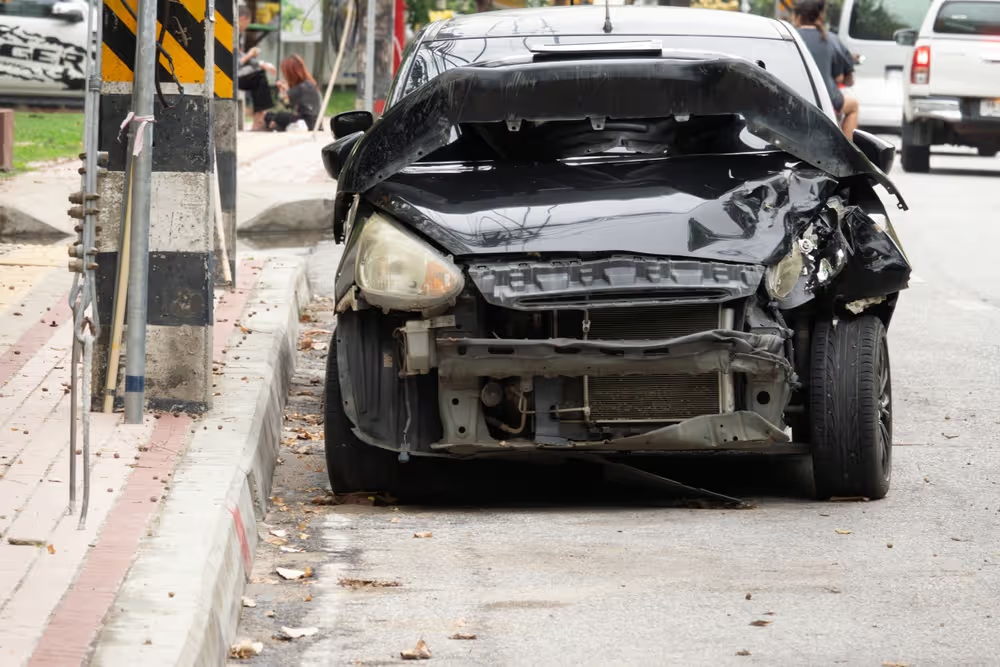
If the accident isn’t severe, the victim (whether a pedestrian, driver, or passenger), should try to collect evidence at the scene, such as photos/videos of the accident, injuries, damage to vehicles, or contact information of witnesses, car number of the offending vehicle and details of the driver involved.
3. Call for Emergency Services
Dial 108 for an Ambulance: Prompt medical attention can save lives. Even if injuries appear minor, calling an ambulance ensures that the injured receive professional care. If you notice any signs of serious injury such as unconsciousness, heavy bleeding, or difficulty breathing do NOT attempt to move the injured person without medical assistance, as it could worsen their condition.
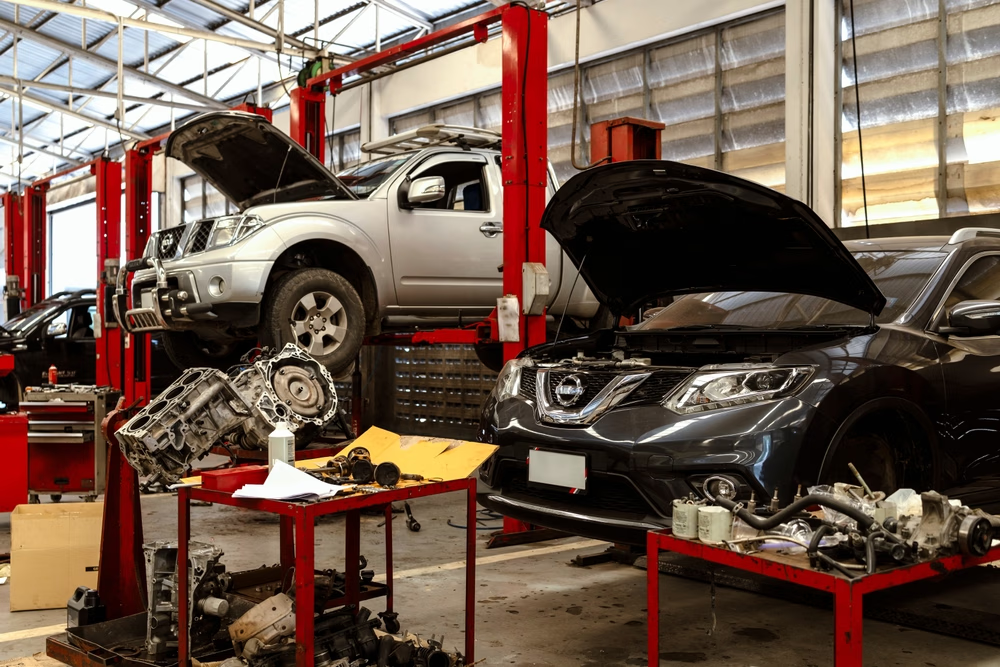
If an ambulance is delayed and the person needs immediate attention, take them to the nearest hospital yourself. Legally, it’s the responsibility of the driver at fault to ensure the injured receive timely care. If they fail to do so, or take the victim to a far-away hospital, criminal charges could be pressed against them.
Expert Tip: If there’s no one around the victim who is bleeding, tear a shirt sleeve and tightly tie above the bleeding area to help stop blood flow. Keep a rapid action kit in the car, a pocket-sized kit which can be a lifesaver in emergencies. This kit includes 2-second pain relief medication, specialised bandages designed to stop heavy bleeding and much more. You can search for this kit from their website or opt for other similar kits online.
Dial 100 or 112 for the Police: The victim or any eye witness can/should report the accident to the police as soon as possible. FIR (First Information Report) can be filed in the nearest police station, or a police officer may visit the accident site upon a call being made by the victim or any third person.
Did you know? An FIR can be filed by the victim/friends/family/witness under sections of the Bharatiya Nyaya Sanhita (BNS) and Motor Vehicles Act, 1988. Relevant sections might include:
- Section 281 BNS: Rash driving or riding on a public way.
- Section 125 BNS: Causing hurt or grievous hurt by an act endangering life or personal safety.
- Section 106 BNS: Causing death by negligence, if applicable.
- Section 134 MVA: Do not ever drive away from the accident spot to avoid charges of hit and run.
4. Seek Medical Attention
Even if you or other victims haven't been hurt, it's advisable to get a thorough medical evaluation. Some injuries, like internal bleeding or concussion, may not be immediately noticeable but could become serious if left untreated. A proper body checkup and record from a doctor can be crucial if any disputes arise between the victim and offender regarding the severity of injuries.
If the victim has severe injuries, the hospital may ask a close relative to fill out a consent form before proceeding with treatments like surgery. If the victim’s family is not physically available at that moment, some hospitals also allow online consent as an alternative.
Creckk’s 24x7 Assistance
Accidents bring confusion and panic. That’s why Creckk offers "Ask Me Anything Anytime Anywhere" - a support feature that connects you instantly for guidance on roadside help, medical steps, accident reporting, or insurance queries. Wherever you are, Creckk ensures you are never alone in handling the situation. Just download the Creckk App and ask your pocket friendly assistance in case of any urgency, And also you get get accessories at your doorstep , with free installation. Download Now!
5. Preserve Medical Evidence for Further Investigation
Keep all medical reports, including hospital bills, doctor’s consultation, prescriptions, therapy records. Document your pain levels and physical limitations as well. It may sound obvious, but such thorough documentation can strengthen your claim, ensuring you receive fair compensation.
Medico-Legal Certificate (MLC): Obtaining a medico-legal certificate from a hospital is essential to document injuries sustained in the accident.
6. Claim Compensation
The Central Government mandates compensation for victims of hit and run accidents:
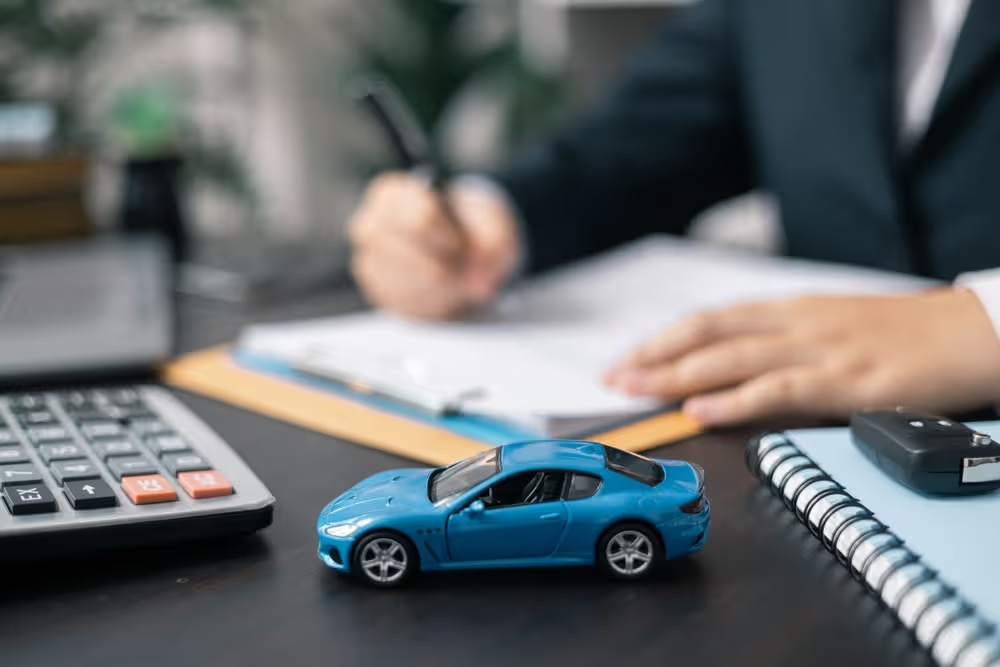
- For death, the fixed compensation is Rs 2 lakh.
- For grievous injuries, the compensation is Rs 50,000.
Insurance: You may also claim compensation from either your own insurance policy or the offender's vehicle insurance if they are covered under third-party liability.
Section 140 ‘No-Fault Liability’: Under the Motor Vehicles Act, victims can claim compensation even without proving negligence of the offender. Compensation amounts to ₹50,000 for death and ₹25,000 for permanent disability.
7. Inform Your Insurance Company
Once the medical emergencies are sorted, inform your insurance company about the accident. This should be done promptly to ensure a smooth claims process. The insurance company will appoint an IRDAI-approved surveyor to assess the damage and determine whether the claim is admissible.
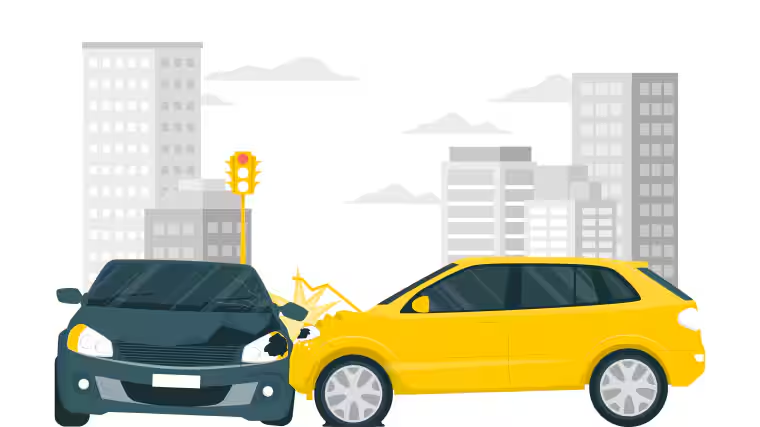
If third-party injuries are involved, avoid moving the vehicle before the insurance company’s inspection. However, if the accident only caused vehicle damage, you can move the car to a workshop before notifying the insurer.
Note: IRDAI stands for Insurance Regulatory and Development Authority of India.
8. Understand Your Coverage
As per the Motor Vehicle Act, having a third-party insurance with your car is a necessity. Go through your insurance policy and understand what all it covers. Pay attention to the coverage limits, meaning the maximum amount your policy will pay you. Check for any extra benefits that your policy might have such as roadside assistance or medical payment coverage. Above all, keep your insurance company’s number on speed dial to avoid having to search for numbers in case of an eventuality.
In severe accident cases (including Third Party Liability for injury or death), the Motor Accidents Claims Tribunal (MACT) will settle compensation based on several factors, such as the victim's age and the extent of injury. The younger the victim, the higher the potential compensation due to the impact of future earning capacity.
9. File an Insurance Claim
After understanding the details, file an insurance claim, providing all necessary details and documents. Most insurers require a First Notice of Loss (FNOL) to start the claims process, which the insured can initiate by calling the insurance company's toll-free number or emailing them with the details of the accident, including their policy number, date and time of loss, and other relevant information. A claims adjuster will assess the damages and inform you about the coverage you are eligible for so cooperate with them fully.
10. Arrange Vehicle Repairs
Coordinate with your insurer to arrange for vehicle repairs. Ensure you understand your policy's coverage and any out-of-pocket expenses you may have to cover. For a third-party damage (TPPD), compensation is capped at Rs 7.5 lakh. Even if the property cost exceeds ₹7.5 lakh, the insurance company's liability is restricted to ₹7.5 lakh, and any amount over this will have to be borne by the insured. If possible, use a workshop that partners with your insurer for cashless repairs.
Pro Tip: Install a dash cam in your car. The device is attached to the car’s windshield and records every small detail on the road. You can get clear footage of incidents that could be shown to the police or your insurance company.
Legal Rights and Good Samaritan Law
In addition to handling the immediate aftermath of an accident, knowing your legal rights can empower you to make the right decisions.
Did you know? The Good Samaritan Law (guidelines issued by the Supreme Court in 2016 and further codified under the Motor Vehicles [Amendment] Act, 2019), protects a witness or bystander who helps an accident victim from legal liability, harassment, or unnecessary questioning. This law encourages witnesses to step forward without fear of consequences.
Whether you're a victim, a bystander, or the person responsible for the accident, staying calm, prioritizing safety, and following the proper procedures, will ensure the best possible outcome.
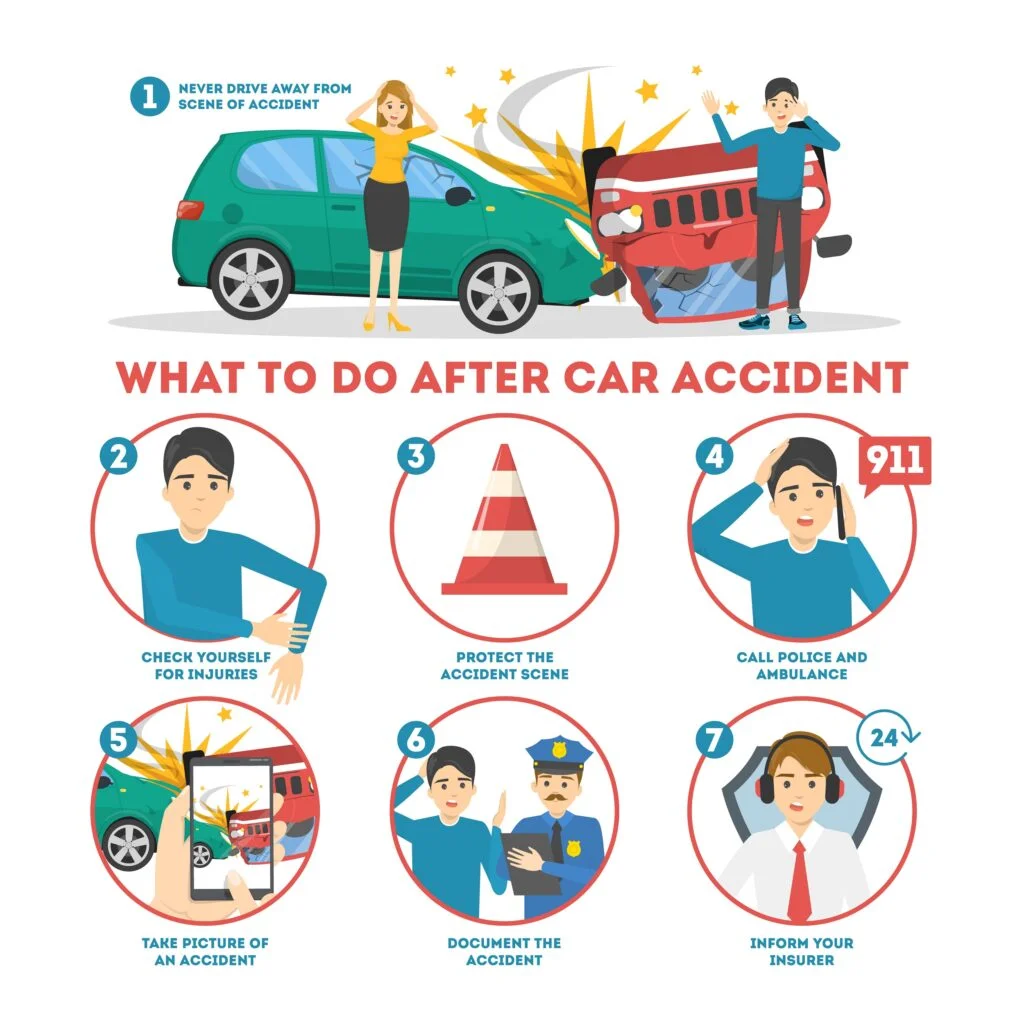
FAQs on Steps After a Car Accident
Q1. What’s the first thing to do right after an accident?
Stay calm, check for injuries, and ensure safety by turning on hazard lights and moving to a secure location if possible.
Q2. What emergency numbers should I dial?
Dial 108 for an ambulance, and 100 or 112 for police assistance.
Q3. What legal sections apply to road accidents in India?
Sections 281, 125, and 106 of the Bharatiya Nyaya Sanhita (BNS) and Section 134 of the Motor Vehicles Act are relevant in accident cases.
Q4. Do I need medical evaluation if I feel fine?
Yes. Internal injuries may not be visible immediately. A thorough medical check-up is essential for health and legal claims.
Q5. What documents should I preserve after the accident?
Hospital bills, prescriptions, therapy records, medical reports, and a Medico-Legal Certificate (MLC).
Q6. What government compensation is available for hit and run cases?
₹2 lakh in case of death and ₹50,000 for grievous injuries.
Q7. How soon should I inform my insurance company?
Immediately after handling medical emergencies. Early notification ensures faster claims processing.
Q8. What is the maximum compensation for third-party property damage?
Insurance companies cover up to ₹7.5 lakh. Any excess amount must be paid by the insured.
Q9. What is the Good Samaritan Law?
A law that protects bystanders who help accident victims from legal or police harassment. It encourages immediate assistance without fear.
Q10. How can a dash cam help in accidents?
A dash cam records video evidence, useful for insurance claims and police reports, ensuring fair accountability.
Related posts



